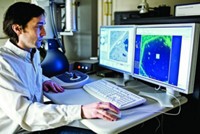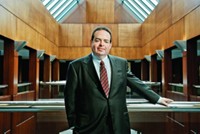Advertisement
Grab your lab coat. Let's get started
Welcome!
Welcome!
Create an account below to get 6 C&EN articles per month, receive newsletters and more - all free.
It seems this is your first time logging in online. Please enter the following information to continue.
As an ACS member you automatically get access to this site. All we need is few more details to create your reading experience.
Not you? Sign in with a different account.
Not you? Sign in with a different account.
ERROR 1
ERROR 1
ERROR 2
ERROR 2
ERROR 2
ERROR 2
ERROR 2
Password and Confirm password must match.
If you have an ACS member number, please enter it here so we can link this account to your membership. (optional)
ERROR 2
ACS values your privacy. By submitting your information, you are gaining access to C&EN and subscribing to our weekly newsletter. We use the information you provide to make your reading experience better, and we will never sell your data to third party members.
Business
Instrumentation: Nonindustry Users Buoy Business In Lean Times
by Ann M. Thayer
January 11, 2010
| A version of this story appeared in
Volume 88, Issue 2

Laboratory and analytical instrumentation makers would like to believe that 2009 was just a fluke. That’s because, for the first time since 1982, global instrument sales declined, dropping 5 to 7% to an estimated $37 billion, according to research firm Strategic Directions International.
COVER STORY
Instrumentation: Nonindustry Users Buoy Business In Lean Times
“Customers were clearly managing to very tight budgets in 2009,” says Thermo Fisher Scientific Chief Executive Officer Marc N. Casper, and capital outlays were hit more dramatically than overall R&D spending. In response, Thermo, Agilent Technologies, PerkinElmer, Waters, and other instrument suppliers looked to cut costs. “The difficult economic climate has been a catalyst for change that will benefit us in the long term,” Casper contends.
The downturn hit different markets and technology areas differently, explains Lawrence S. Schmid, CEO of Strategic Directions. Sales to industrial users were down more than those to academic and government labs. And as manufacturing output fell, tools for materials characterization sold less well than those for life sciences markets.
For many suppliers, life sciences areas such as molecular biology and genomic analysis continue to grow. Sales of small to mid-sized instruments, such as real-time PCR systems, stayed consistent in 2009, unlike higher cost capital equipment and replacement systems, says Bernd Brust, chief commercial operations officer at Life Technologies.
“Academic funding has been very strong, and every indication is that it will continue to be,” Brust adds. Government research spending is on an uptick as well. Applications emerging from research also bode well for growth in diagnostics and in applied markets such as quality and safety testing.
Despite the strength in life sciences, views are mixed on how big a factor the large pharmaceutical companies will be as they restructure in the year ahead. Previously cash-starved biotech customers are expected to reemerge in 2010, and growth is clearly occurring in India and China.
In general, executives say, market conditions started improving in the second half of 2009. “We think the worst of the economic downturn is behind us and markets have begun to stabilize,” Thermo’s Casper says. Government stimulus programs around the world are definitely a bright spot, he adds, although it’s hard to predict when most of the money will flow. Thermo and Life Technologies both anticipate at least $100 million in sales opportunities from stimulus spending in 2010 and beyond.
During the lean times, fewer new products were introduced, but competition should intensify because “everybody wants to get back on the profit track,” Schmid says. “Coming out of a recession you’d like to have new products that engender some enthusiasm.”
As a result, Schmid is cautiously optimistic about 2010. “It’s not going to be exciting, but it looks like we are going to see positive growth of about 2 to 4%,” he says.





Join the conversation
Contact the reporter
Submit a Letter to the Editor for publication
Engage with us on Twitter